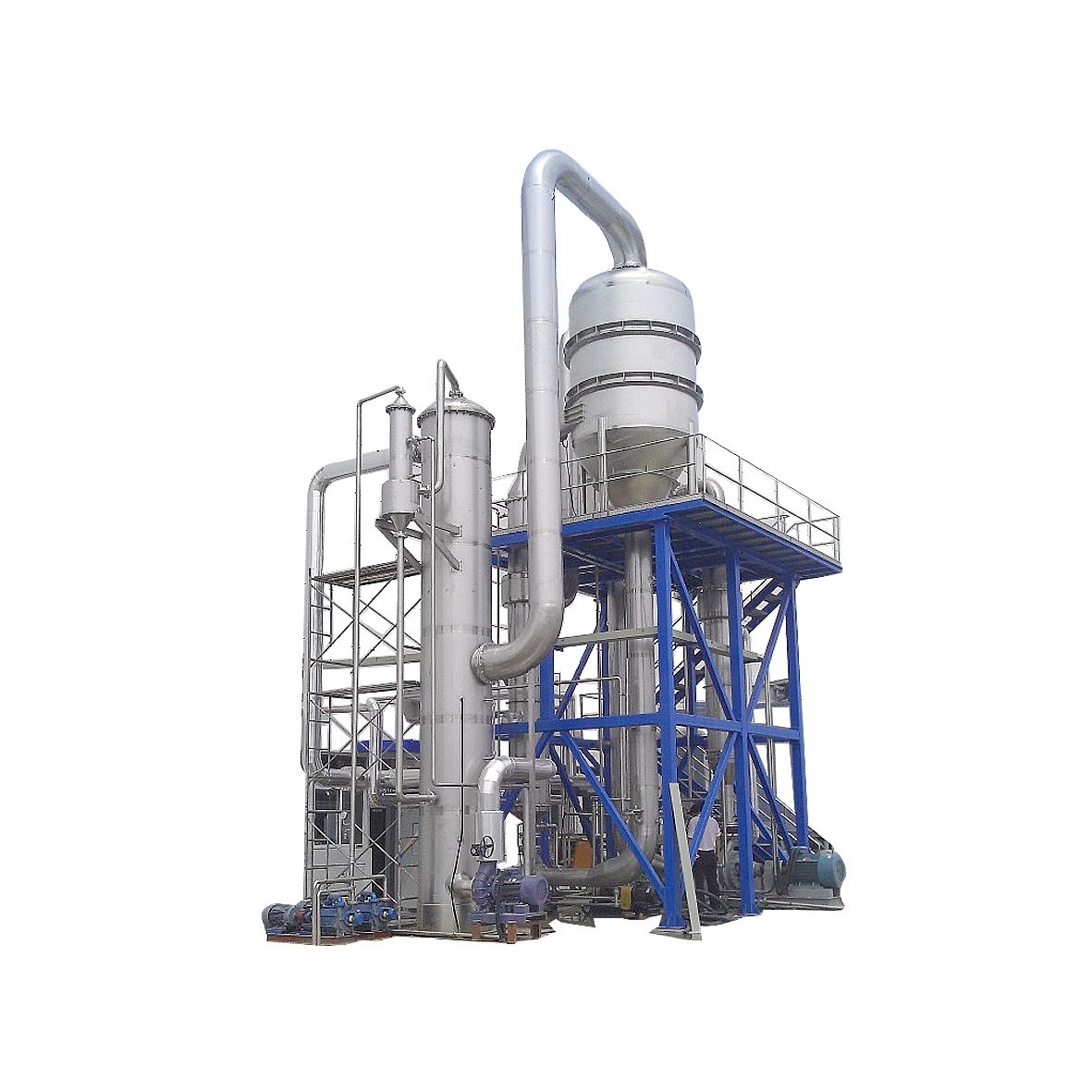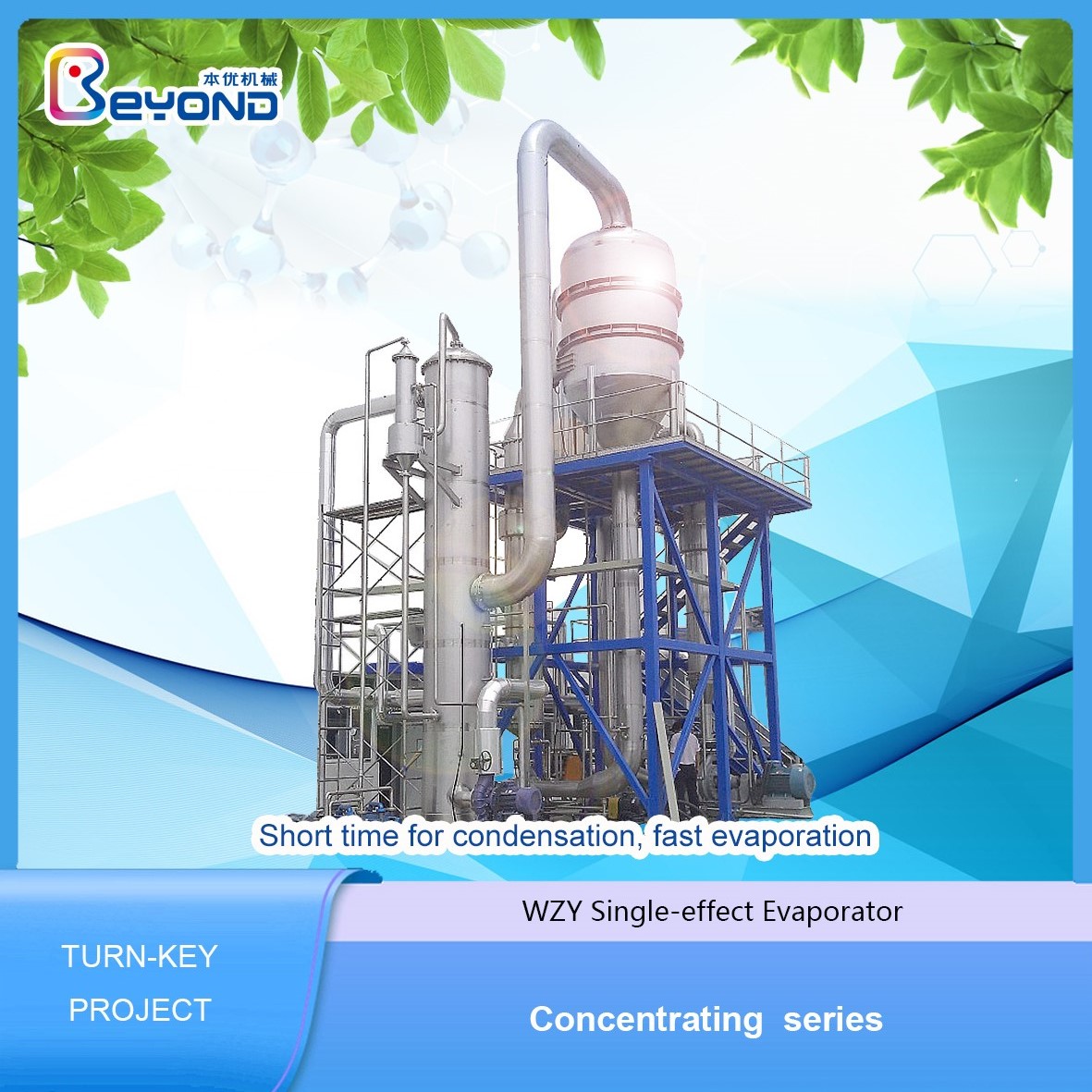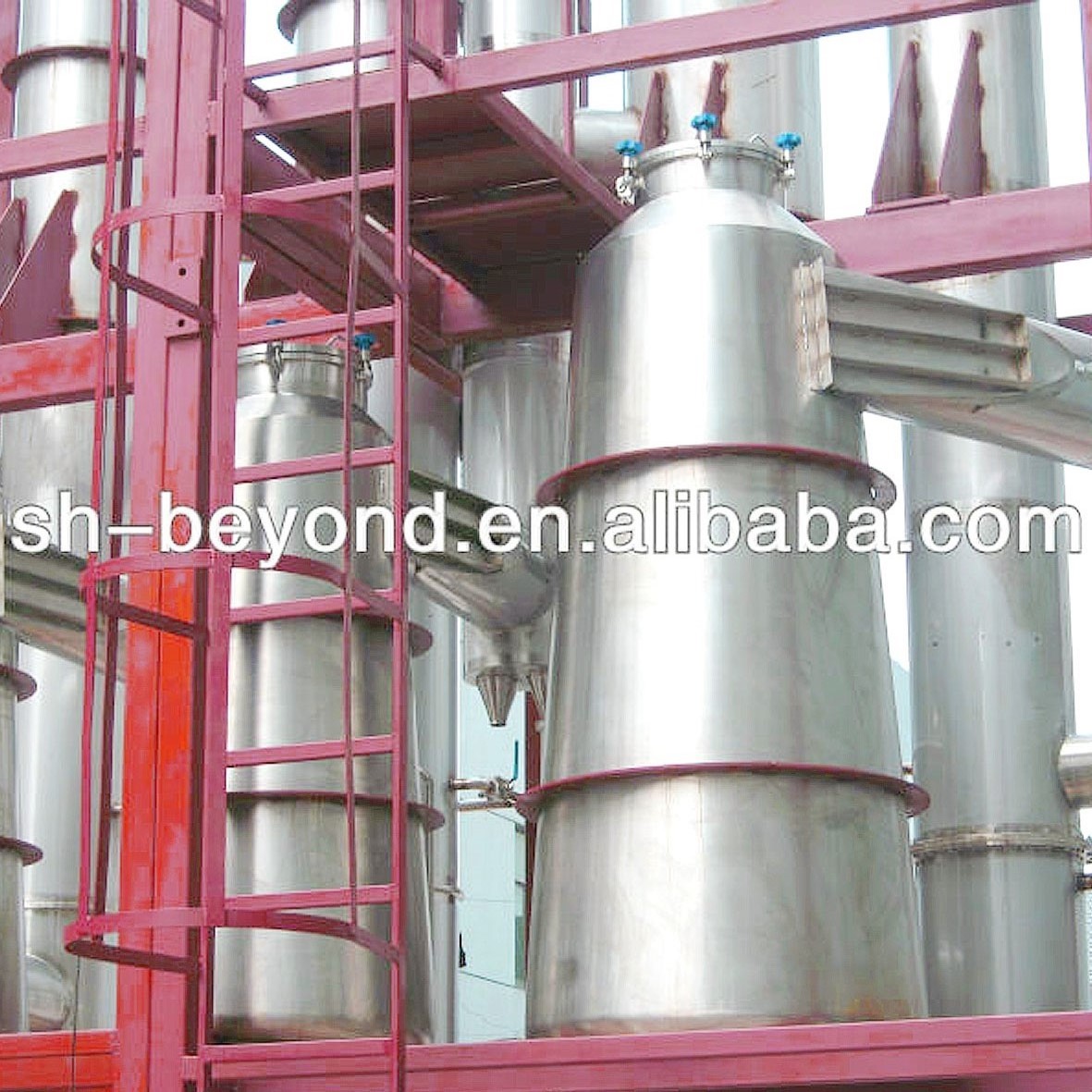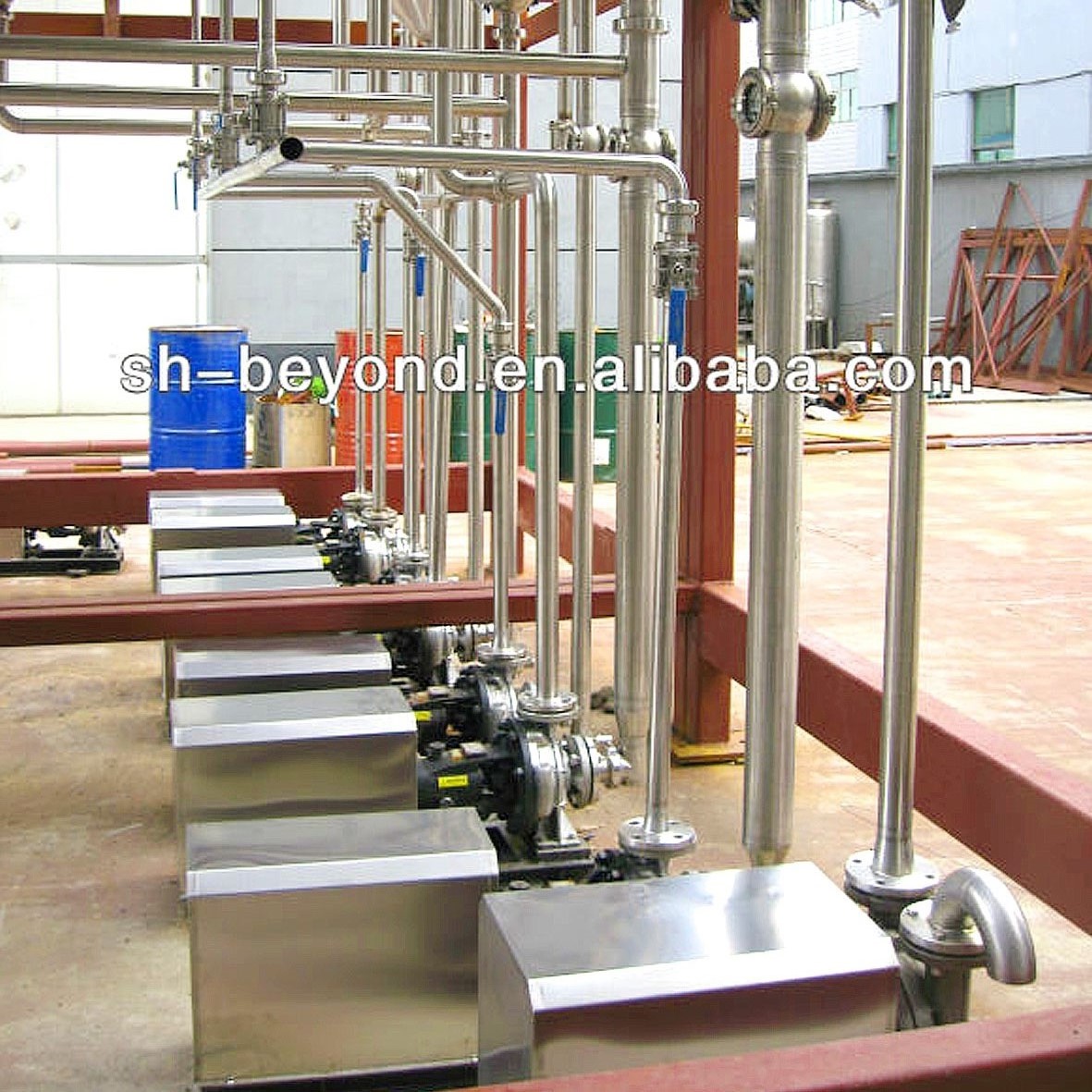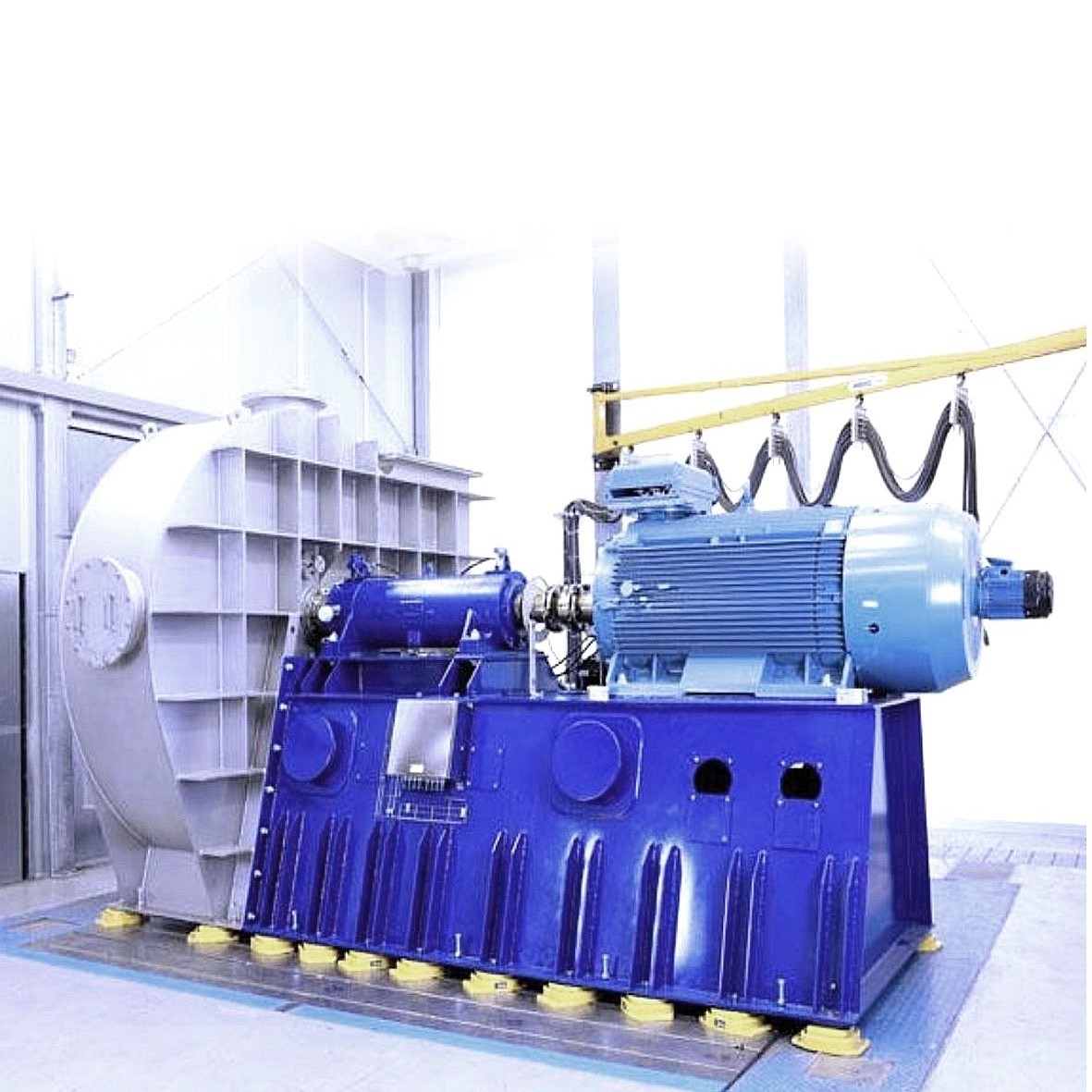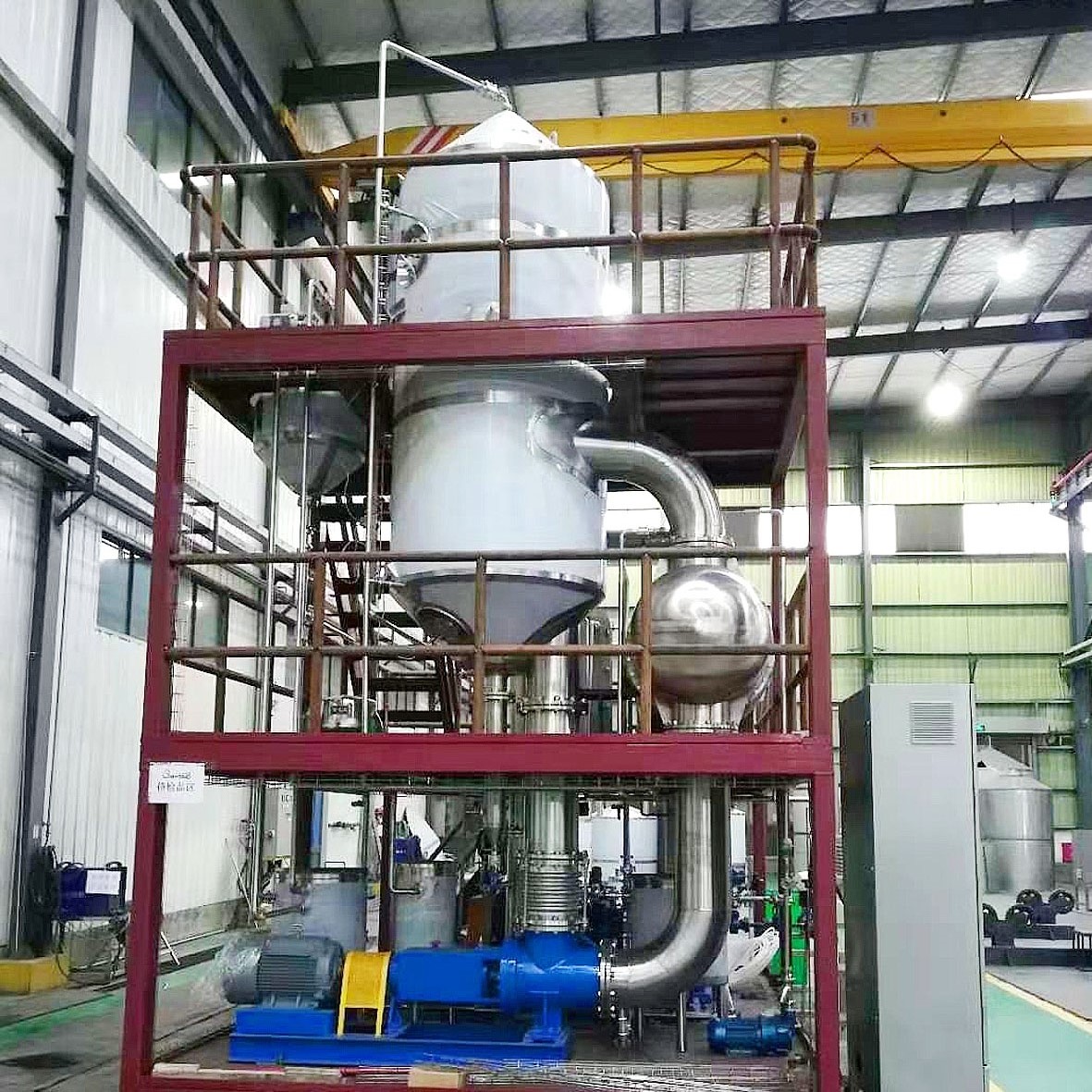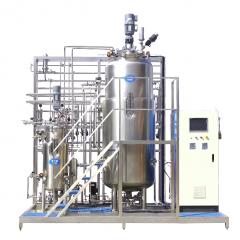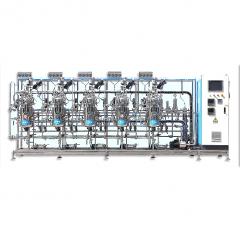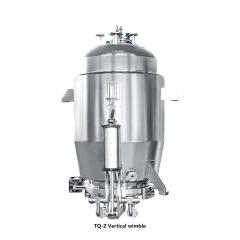
A single effect evaporator is a device used to separate solutes and solvents from liquids. It is mainly used in industrial production, especially in fields such as chemical processes and food processing.
The working principle of a single effect evaporator is based on the evaporation principle. It transfers solutes from the liquid phase to the vapor phase by heating the liquid containing the solute to the evaporation temperature. The steam is collected and condensed into a liquid, forming the required concentrated solution.
A single effect evaporator typically consists of the following main components:
1. Heater: Used to heat the liquid entering the evaporator. The heat source can be steam, hot water, hot oil, etc.
2. Evaporator: In the evaporator, the liquid is heated to the evaporation temperature and the solute is transferred from the liquid phase to the vapor phase.
3. Separators: Used to separate steam and residual liquid. The steam is discharged through the outlet above the separator, while the concentrated liquid is discharged through the outlet at the bottom.
4. Condenser: Used to cool steam and transform it into a liquid state. This can recover the solute and form a concentrated solution.
5. Pump: used to send the concentrated solution back to the heater to continue the evaporation cycle.
Single effect evaporators have a wide range of applications. It can be used to concentrate and recycle liquids such as dairy products, fruit juices, beverages, pharmaceuticals, chemical products, etc. It has the advantages of simple operation, low investment cost, and low energy consumption.
The working principle of a single effect evaporator is as follows:
1. The feed liquid first enters the evaporator and is heated to a temperature above its boiling point. This can provide heat through various means, such as steam, heating medium, or direct heating.
After heating, the liquid begins to evaporate and generate steam. The heat exchange between steam and non evaporative liquid causes the solute in the liquid to gradually concentrate.
After steam is generated, it needs to be separated. This can be achieved by installing a separator (also known as a fractionator) on top of the evaporator. In the separator, steam is collected and extracted, while the remaining unexpired liquid continues to circulate in the evaporator.
The separated steam is usually cooled through the condenser and converted back into liquid form. Such recycling can save energy.
The advantages of a single effect evaporator include:
1. Simple structure: The single effect evaporator consists of a small number of equipment, with a relatively simple structure and easy operation.
2. Energy conservation: By recovering steam for condensation, energy consumption can be saved.
3. Economical and practical: Compared to other complex evaporation systems, single effect evaporators have lower costs and are suitable for some heat sensitive or low demand situations.
However, the disadvantage of a single effect evaporator is that its evaporation efficiency is relatively low and requires a large amount of heat input to achieve the desired concentration effect. Therefore, in some applications that require higher concentration efficiency, it may be necessary to use multi effect evaporators to improve energy utilization and production efficiency.
WZY Single-effect Evaporator
The external circulating single-function evaporator is made up of heater, evaporator, separator, and so on, of which parts contacting with materials shall be made of stainless steel. The equipment applies for evaporation and condensation of liquid materials in the industries such as pharmacy, foodstuff, chemical, light industry and so on. The equipment has the characteristics of short time for condensation, fast evaporation and preventing the thermal sensitive materials from been damaged preferably.
There are three kinds of types for the series single-function evaporator:
·Conventional type WZY, applies for water solution evaporation.
·Alcohol recycling type WZYH, applies for alcohol solution evaporation, which has bigger condensing and cooling area to make sure alcohol recycling. The recycling concentration can reach as much as 70~85º, attrition rate of alcohol is less than 5%, and temperature after alcohol recycling is not more than 40℃.
·WZYS paste obtained type, applies for single-function evaporation and obtaining the condensate paste. After normal evaporating of single-function, shut down the valves of circulation tube and the one of connecting nozzle between heating and evaporating chamber, in order to make feed liquid enter into the evaporating chamber on the whole and heat by the sheaf in the evaporating chamber directly, then condense with decompression in the normal pressure mode, for the purpose of enhancing the concentration rate of material up to the range 1.35-1.45.
Technical data
|
Type Specification |
WZYH-500 |
WZYH-1000 |
WZYH-1500 |
WZYH-2000 |
|
Steam consumption(kg/h) |
500 |
1000 |
1500 |
2000 |
|
Evaporating capacity(kg/h) |
500 |
1000 |
1500 |
2000 |
|
Recycling capacity of alcohol(kg/h) |
300 |
600 |
900 |
1200 |
|
Water consumption(t/h) |
6 |
10 |
15 |
20 |
|
Power consumption(kw) |
5.5 |
7.5 |
9 |
11 |
|
Useful vacuum degree(MPa) |
0.08 |
0.08 |
0.08 |
0.08 |
|
Steam pressure(MPa) |
0.09 |
0.09 |
0.09 |
0.09 |
|
Specific weight of concentrated solution |
Pipe inside 1.2 Jacket heating 1.45 |
|||
|
Concentration of alcohol |
70~80 |
|||
|
Dimension(m) |
2.5×1.3×2.8 |
3×1.4×3 |
3.3×1.4×3.5 |
2.5×1.3×2.8
|

